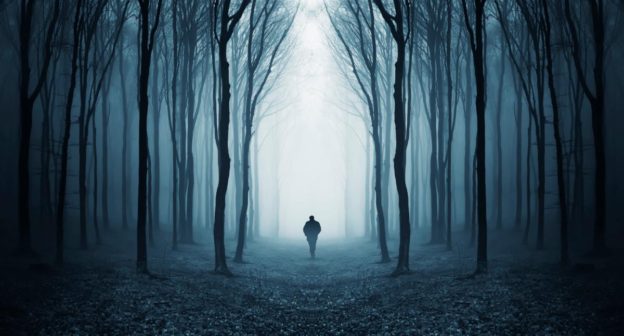Remember the monkey bars in childhood, you had to let go if you wanted to move forward.
Someday very soon we’ll be able to claim, we were survivors of immeasurable events. This is what living through history feels like. Your today and yesterday are the stuff of which history is made of. If you appreciate time capsules and legacies, you are possibly recording your experiences in photographs, journals, interviews, music or art. Generations to come will be studying what you and I are now living through characterized as the confusion of uncertainty. Chaos Theory tells us any system of disorder and chaos is ripe for change.
The past long months, when ninety-five percent of the world’s collective governments decided to simultaneously shut down human culture, is likely to be recorded as unrepeatable as the dinosaurs and the ice age. What we’re living through is significant. Some of us are still young enough to remember when the moon was something to admire as an object in space, not a destination for a solar road trip. And how about the Berlin Wall, that permanent icon and impenetrable barrier to unification of Germany; now a fainting memory of history. Other life altering events: the end of scribes and the beginning of the printing press, the end of slavery, invention of electricity, the telephone, the advent of the automobile, flight, and revolutionary technology.
Until we take our place in history, we remain in the words of astronomer and poet Rebecca Elson, “small, wet miracles without instruction, only the imperative of change,” suddenly find ourselves scattered six feet apart across a changed world, blinking with disorientations, disbelief, and no small measure of confusion about tomorrow’s tomorrow. Suddenly without solicitation, the game of life moved inward. The long thought, the quiet reflection, all in an attempt to see a strategy in the fog, the undiscovered terrain of our new future.
As the death tolls rise, the hysterical commentary we once called news turns cable television into R rated headlines of horror, the proverbial citizen in the street wonders if the world has gone mad. While all the talking heads fill the air with a doom’s day song, I offer a sharply different view.
If you believe the human story is far from ending, and suspect beneath the clatter and jangle of seemingly senseless events there lies a startling and potentially hopeful pattern, then read on. We need to step back for a long view of the evolutionary phenomenon of every revolutionary transition.
Changes in life can be known by different names: revolutions, transformations, passages, transitions. However, you name them, all transformative revolutions disrupt the status quo, dramatically alter our lives, yet each share the same basic patterns: life as we know it comes to an end followed by a period of confusion, second guessing, and distress, ultimately leading to a new beginning. As I wrote last month, “Every new beginning comes from other beginnings end.” ~Seneca c. 45 BC-65 AD
A revolutionary change is the manner in which a society, or culture is catapulted into a transformative future no human effort could have achieve on its own.
Here are the signposts of every revolutionary change:
Endings or Losses: We confuse them with finality forgetting endings are the first stage of any revolutionary change process. There are three personal phenomena you will likely experience:
- Disenchantment: The discovery that in some sense one’s world is indeed no longer what we thought. Many significant revolutions not only involve disenchantment, they begin with it. How many of you prior to COVID-19 were feeling for all your success, “is this all there is?”
- Disengagement: Divorce, death, job losses or changes disengage us from the contexts in which we have known ourselves. They break up the old cue-system, which served to reinforce our roles, and pattern our behavior.
- Disidentification: The disidentification process is really the inner side of the disengagement process, where we lose our self-definition, the stage of not being quite sure who we are any more. A sign in my office reads, “I ain’t what I ought to be, and I ain’t what I’m going to be, but I ain’t what I was.” Clearly the old identity stands in the way of any new potential growth and opportunity.
Time of Reflection: One of the difficulties of experiencing a revolutionary transition in our modern lives is that we have lost our appreciation for this gap in the continuity of existence. A time of reflection is meant to be a moratorium from the conventional activity of our everyday existence. The basic industry of this stage is attentive inactivity. In this apparent aimless activity of our time alone, we are doing important inner realignment. This is a time to surrender and stop struggling to escape this apparent unproductive stage. What to do consists not of ways out, but of ways into reflection and acceptance. This is a time to cultivate receptivity.
“I felt in need of a great pilgrimage, so I sat still for three days.”
Hafiz c. 1320-1389
New Beginnings: We come to the beginning only at another beginnings end. Wouldn’t we all prefer a simple procedure to follow rather than a process to understand? Unaware life moves forward. Even without knowing, we cooperate in doing what must be done to be renewed and changed. As much as we long for an external sign that points the way to the future, we must settle for inner signals alerting us to the proximity of new beginnings. The new beginning marks the termination point of the previous life. It is to assert that we are on our own in a much deeper sense than we ever imagined when we originally set up shop as an adult.
Endings (death to once was), Times of Reflection (reassessment and surrender), and new beginnings (rebirth) are not ideas we bring to life, they are phenomena we find in life.
“All revolutionary transitions enter the world with a terrifying uncertainty.”
~ Author Unknown

